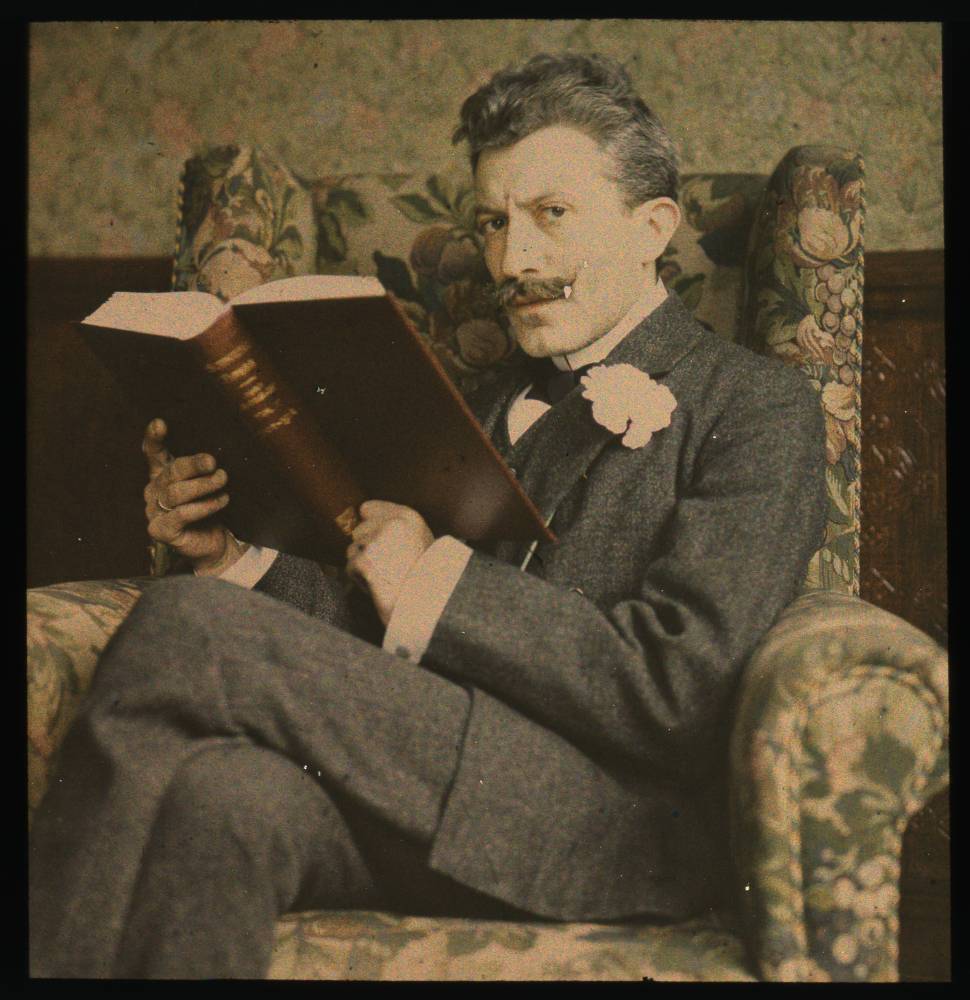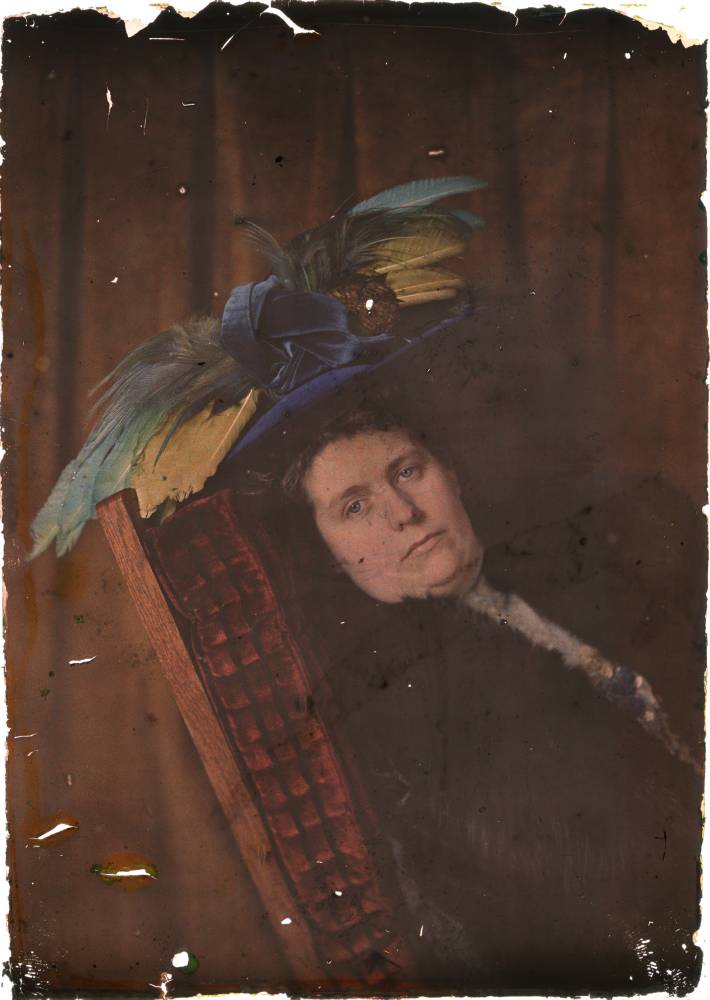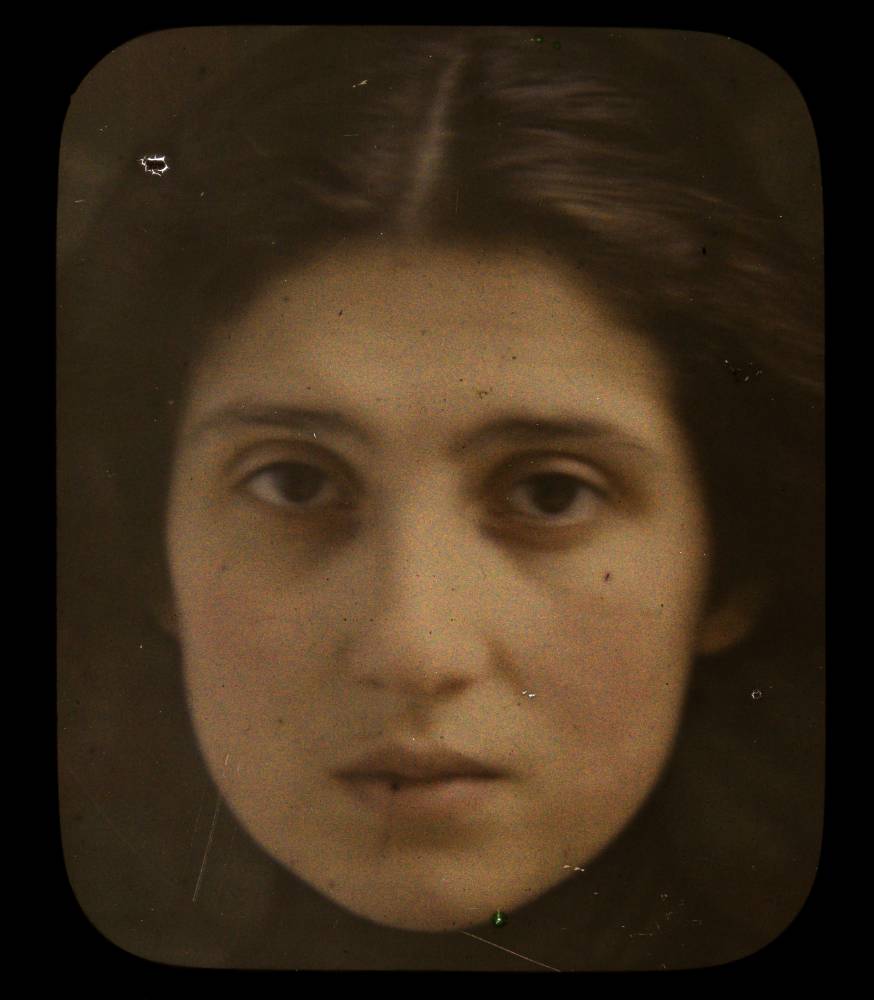.

Woman in blue dress sitting near fireplace: autochrome photo by Dr. L. Silberstein, c. 1915 (George Eastman House)
It hadn't always been this way.
A hundred years ago things had been
Well, in a certain way... clearer, simpler.
That was before mother had come to stay.
She had been able to sit up straight then
Well, in a certain way... clearer, simpler.
That was before mother had come to stay.
She had been able to sit up straight then
And to at least put up an appearance of civility.
He had been able to actually read
He had been able to actually read
His book, rather than merely to pretend rigidly
To be holding it. Neither understood
The viselike dominion of necessity in which
Their lives were gripped. For this
Melancholy couple things would remain
This way forever. Gaze
Upon them, and learn from their story.

Man with book sitting in chair: autochrome photo, photographer unknown, c. 1915 (George Eastman House)

Woman wearing [?] dress and blue hat with feathers and pinecones: autochrome photo, photographer unknown, c. 1910 (George Eastman
House)

Woman's face: autochrome photo by Dr. L. Silberstein, c. 1915 (George Eastman House)
It sounds weird to say that Rue (Melancholy Couple) makes me happy (or worse, I think, makes me smile), but it's the way the short story (with its extending implications) is told and the way the words and tale fit the autochrome mood. For some reason, with autochromes you feel you're really, permanently there, in the frame. I visited George Eastman House once when I was attending a wedding in Rochester, but haven't been back since, which is too bad. If you've ever/never been, it just seems that Rochester is really far away. Curtis
ReplyDeleteBeautiful pairing of text to images, Tom. The eyes that gaze upon us. The eyes that we become.
ReplyDelete-David
Sometimes the enchantment, enthrallment, goes barnward... and the couple lives-on in a self-soiled stall. Sad, sad, sad. Of course, today's substitute for the mother-in-law in-residence is the failure-to-launch age-30 son. Some marriages perish from strings of mini-strokes.
ReplyDeleteArrrggghhh,
Red Shuttleworth
This way forever. Gaze
ReplyDeleteA sure and terse pivot line.
Having a grip of one's self; such grim, ineluctable work.
Gazing, gripping melancholy indeed. BTW, if one goes back much further than a hundred years, he/she will find "a supposed abnormal state held to be due to the presence of an excess of black bile and characterized by sullen irascibility or gloomy mental depression"--Webster's 3rd New International
ReplyDeleteCurtis, some nights Rochester seems farther away than the far side of the Moon. But then so does Indian Rock.
ReplyDeleteGeorge Eastman, hero. Chronic spinal pain caused him to be the single salient exception to the general rule that great inventors do not commit suicide. The performance was remarkable, the deed entirely intelligible, anyway to one who's experienced the latter without ever being one of the former.
The autochrome true-colour process, sans negative, remains a wonder. The collector Paul Kahn assembled the world's biggest trove of autochromes. They're online. The colours are out of this world.
Dr. L. Silberman, who took the first and last photos here, capturing that haunting gaze, was not a psychiatrist (!) but a researcher in optics, credentialed by the University of Rome.
And that book that the "man of the house" is holding... any viewer with better eyesight than mine (that is, any viewer) is invited to submit a suggestion as to its title.
Krafft-Ebbing?
Ebb Tide?
And about that Houseguest from Hell...
Th'immortal bard Greg Corso once was wont to enliven a public "poetry event" by swaggering to the podium and demanding, "Who's Death's mother in law?!!"
The audience would of course be stumped.
"Hee!" laughed Gregory. "None of youse assholes are real poets, then!"
And so... without further ado: More autochromes!!
Krafft-Ebbing. I'm deciding. Curtis
ReplyDeleteYes, the photo (not to mention the story) absolutely works best when it's Krafft-Ebbing.
ReplyDelete